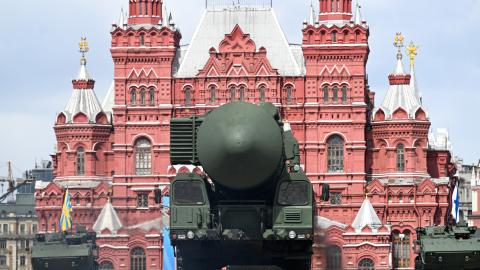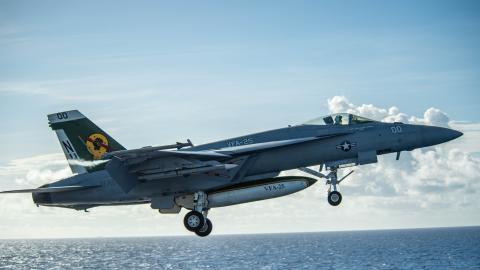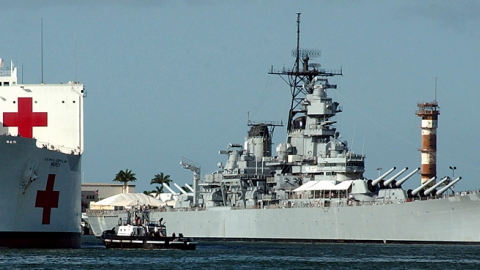Earlier in March, Secretary of the Navy Ray Mabus revised how to count the size of the U.S.’s battle force inventory. The battle force inventory is important because it measures the size of the U.S. combat fleet. The new definition will make the U.S. combat fleet look larger than it really is. This provides a political shield against legitimate concerns that the Navy is shrinking. Ships included in the battle force inventory had been “warships capable of contributing to combat operations” or ships that contribute “directly to Navy warfighting or support missions.” Aircraft carriers, destroyers, amphibious ships, and submarines are included in the former; examples of the latter are mine warfare vessels.
Under the new definition hospital ships will be included in the battle force inventory. So will mine countermeasure ships: they had previously been categorized by their ability “to provide support to fleet units.” This classification made sense because while hunting for, and destroying, enemy mines could enable a naval squadron to conduct offensive operations, such missions could neither sink enemy ships nor project power ashore. Also added to the battle force inventory are coastal patrol (PC) boats. Weighing in at about one-seventh the displacement of the littoral combat ship, the Navy’s smallest combat vessel, the PC is armed with twin 25mm guns and several .50 caliber machine guns. If an enemy has attacked the U.S. Navy with container ships, cabin cruisers, or sailboats a 25mm gun is a fearsome thing. If an enemy attack is conducted by such small widely-operated naval combat ships as frigates, the anti-ship missiles they commonly carry will sink a PC far beyond its small weapons’ range.
The justification offered for including these ships in the battle force inventory is that they will eventually be replaced by the littoral combat ship (LCS). In other words smaller vessels of dubious utility in a real fight can be counted in the battle force inventory because they will be replaced by combat vessels. Is the LCS a good combat vessel? It could be. We don’t know yet. But, in his budget “preview” on February 24, Secretary of Defense Chuck Hagel justified the administration’s decision to reduce by 38 percent the number of LCSs the Navy will build, noting that “we need to closely examine whether the LCS has the independent protection and firepower to operate and survive against a more advanced military adversary and emerging new technologies.” If the secretary of defense believes that the combat efficacy of the LCS itself needs to be re-examined how, aside from political need, can the PC’s inclusion in the battle force inventory be justified because the LCS will replace it?
As for adding the Navy’s two hospital ships to the battle force inventory one doesn’t know whether to laugh or cry. The two ships, USS Hope and USS Mercy, travel about the world doing immeasurable good earning the U.S. and its Navy respect by conducting medical missions. They are unarmed and an attack against them ought to be treated as a war crime. They were not intended to go in harm’s way and should not be included among ships that do.
The Navy secretary’s new definition is an example of the politicization to which the entire Defense Department has been subject. It’s true that major technological innovation might reduce the number of ships that America’s combatant commanders need to accomplish their assigned missions. But it’s equally true that any such change in how the battle force inventory is counted would be most successful if agreement with Congress had been reached in advance. The recently announced change may succeed in persuading some that the size of the U.S. combat fleet is nothing to lose sleep over. But it should be a reminder of Abraham Lincoln’s question: ‘does calling a horse’s tail its leg mean that a horse has five legs?’ And of his answer: ‘no: because calling a tail a leg doesn’t make it one.’ Including unarmed ships or those that were not designed to strike an enemy, or those that are too weak to do so effectively in the U.S.’s combat fleet might relieve some of the pressure on the Navy that is a result of the correct perception that the fleet is shrinking as the international situation deteriorates. But it will not change the facts. The way to do that is to build more ships.

















